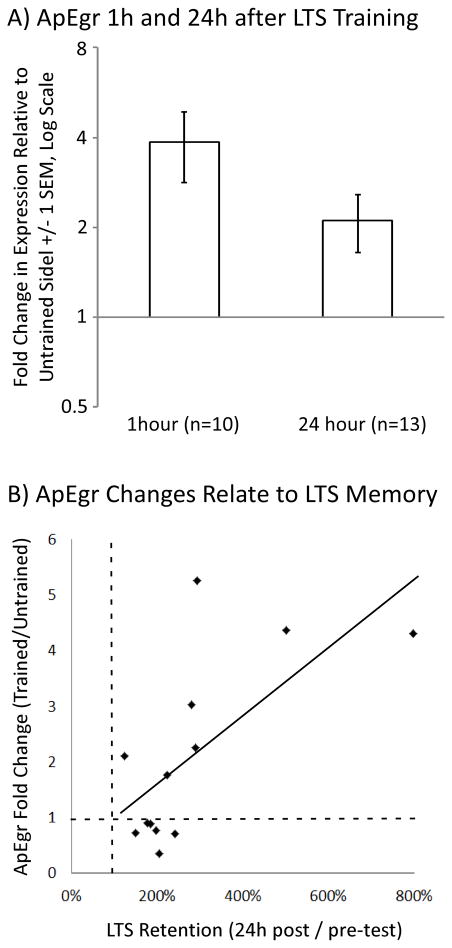Figure 7.
ApEgr mRNA is rapidly and persistently up-regulated by long-term sensitization training. A) Changes in ApEgr expression in the pleural ganglia 1 hour (n = 10) and 24 hours (n = 13) after unilateral long-term sensitization training. Data are expressed as the ratio of expression from the trained to the untrained side. B) Changes in ApEgr expression relate to degree of memory retention at 24 hours. Changes in ApEgr expression are plotted as the ratio of expression from the trained to untrained side (r = 0.67, 95% CI [0.19, 0.89], p < 0.05). The dotted line at 1 on the ApEgr axis represents no difference in expression. Memory expression is expressed as the ratio of tail-elicited siphon withdrawal duration 24 hours after training relative to duration prior to training. The dotted line at 1 on this axis represents no retention. ApEgr is an Aplysia homolog of the Early-Growth Response transcription factors. ApEgr recognizes the GSG motif recognized by Egrs. ApEgr is bidirectionally regulated by neural activity. ApEgr is rapidly and persistenly up-regulated during long-term sensitization.

